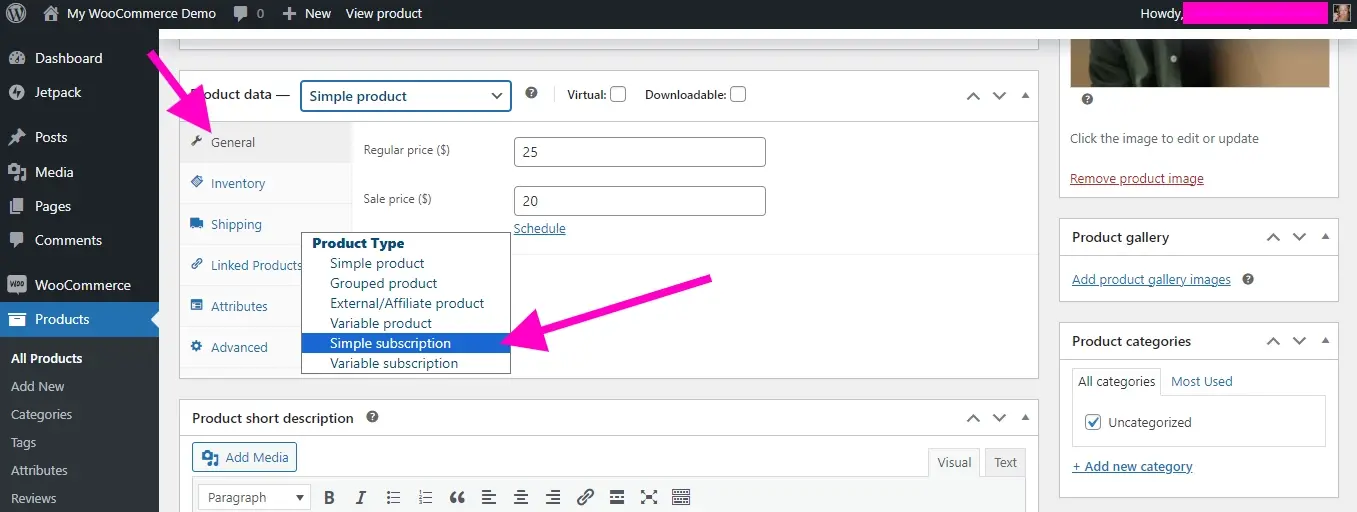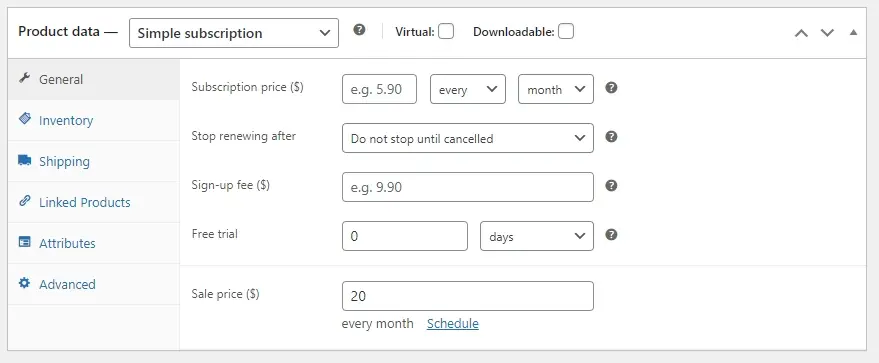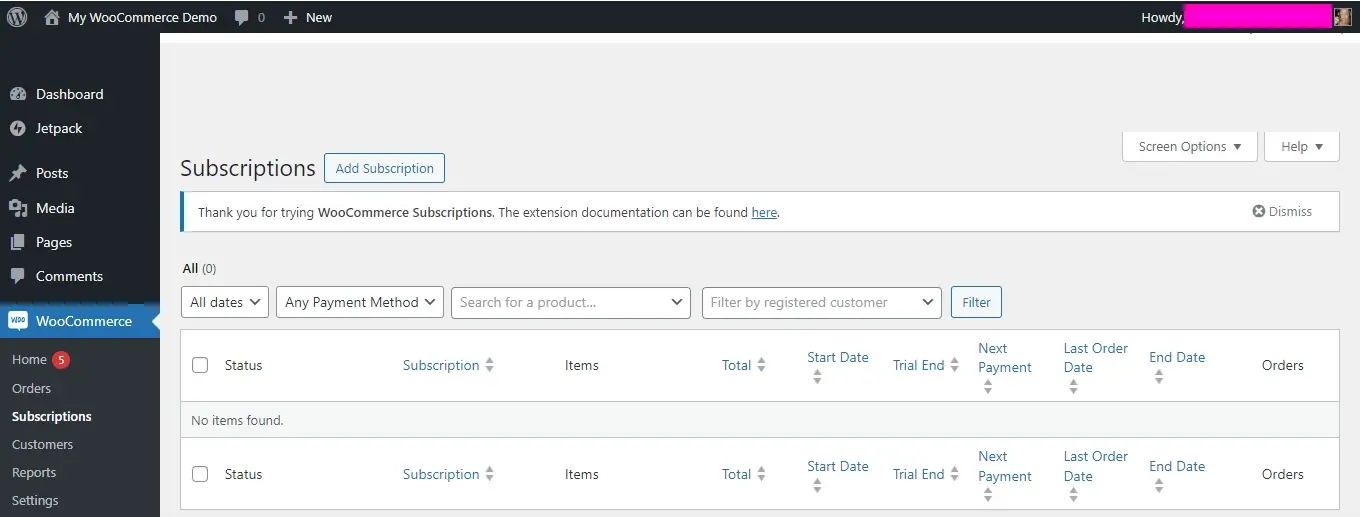Ever considered setting up recurring payments for your store? They have been becoming increasingly popular, so much so that Learning Management Systems (LMS), a type of recurring subscription business, was valued at more than $16 billion back in late 2022 and is expected to be valued at over $47 billion by 2030. This growth illustrates the potential for substantial passive income. With WooCommerce, setting up recurring payments can open doors to this passive income, and using Verpex Hosting can ensure your eCommerce operations are smooth and reliable.
What Are Recurring Payments?
Recurring payments have become a useful feature in e-commerce, revolutionizing the way businesses and consumers interact financially. In essence, recurring payments, also known as subscription payments or automatic payments, are transactions that happen regularly, typically on a predetermined schedule, without the need for manual intervention from the consumer. These transactions are often used for services like subscriptions to streaming platforms, software licenses, gym memberships, utility bills, and more.
The mechanism behind recurring payments is relatively straightforward: consumers authorize a business or service provider to charge their chosen payment method (credit card, bank account, etc.) at regular intervals for the provision of a service or product. Once authorized, the payments occur automatically, usually on a monthly, quarterly, or yearly basis, until the consumer cancels the subscription or service.
Pros and Cons of Offering Recurring Payments
Before going full speed into implementing recurring payments in WooCommerce, it’s important to know the pros and cons.
Pros
Cons
Pros of Offering Recurring Payments
If you’re wanting to offering recurring payments, here’s some advantages to it:
Predictable Revenue Streams
For businesses, recurring payments offer a predictable and stable source of revenue. Rather than relying solely on one-time purchases, they can establish a steady income stream, facilitating better financial planning and forecasting. This predictability is particularly beneficial for subscription-based businesses, as it allows for better long-term strategizing and investment.
Enhanced Customer Retention
Recurring payments encourage customer loyalty and retention. Once a consumer subscribes to a service and sets up automatic payments, they are less likely to switch to a competitor. And the kicker is, that if your services are really good, one stat says that 59% of customers will likely stay with you!
This is because the convenience of automatic billing reduces the friction associated with the renewal process. Additionally, customers who have recurring payments set up are more likely to continue using the service, as they perceive it as part of their routine expenses.
Improved Cash Flow
Businesses benefit from improved cash flow management with recurring payments, and depending on the product or service, it could generate passive income. Instead of waiting for sporadic sales or invoicing cycles, they receive regular payments at consistent intervals. This allows for better budgeting, timely bill payments, and the ability to invest in growth opportunities without being constrained by cash flow fluctuations.
Cost Efficiency
Automating payments reduces the administrative overhead associated with manual billing and invoicing processes. Businesses save time and resources by streamlining payment collection, reconciliation, and customer support related to billing inquiries. Additionally, the risk of late payments or non-payment is minimized, reducing the need for debt collection efforts.
Scalability
Recurring payments support business scalability by facilitating incremental revenue growth without proportionate increases in operational costs. As the customer base expands, the revenue generated from recurring subscriptions accumulates, providing the financial foundation for scaling operations, investing in product development, and expanding market reach.
Cons of Offering Recurring Payments
Customer Churn
While recurring payments promote customer retention, they also present the risk of customer churn if the service fails to meet expectations or if competitors offer more compelling alternatives. If customers perceive the value of the subscription to be lower than the cost, they may cancel their recurring payments, leading to revenue loss and reduced profitability.
Payment Disputes and Chargebacks
Automatic billing increases the likelihood of payment disputes and chargebacks, particularly in cases where customers forget about recurring charges or dispute the quality of the service. Chargebacks can incur additional fees and administrative burdens for businesses, and excessive chargebacks can damage their reputation and merchant account status.
Compliance and Security Risks
Managing recurring payments requires strict adherence to regulatory compliance standards, such as PCI DSS (Payment Card Industry Data Security Standard), to ensure the security of customer payment data. Non-compliance can result in hefty fines, legal consequences, and reputational damage. Moreover, storing sensitive payment information increases the risk of data breaches and cyberattacks, posing a threat to both businesses and customers.
Customer Preferences and Flexibility
Some consumers prefer the flexibility of opting for one-time purchases rather than committing to recurring subscriptions. Offering only subscription-based services may alienate these customers and limit the potential market reach. Businesses need to provide alternative payment options and subscription tiers to accommodate varying customer preferences and purchasing behaviors.
Revenue Volatility
While recurring payments provide predictable revenue streams in the long run, they can also lead to revenue volatility if there is a sudden increase in customer churn or a decline in new subscriptions. Businesses heavily reliant on recurring revenue may face financial instability during economic downturns or periods of market disruption, highlighting the importance of diversifying revenue streams.
Recurring payments offer numerous benefits for businesses, including predictable revenue streams, enhanced customer retention, improved cash flow, cost efficiency, and scalability. However, they also present challenges such as customer churn, payment disputes, compliance risks, and revenue volatility. To maximize the advantages of recurring payments while mitigating the associated risks, businesses must prioritize customer satisfaction, invest in robust payment infrastructure and security measures, and maintain flexibility in their pricing and subscription models.
How to Set Up Recurring Payments in WooCommerce
Setting up recurring payments in WooCommerce requires the use of a suitable plugin, as WooCommerce itself doesn't natively support recurring payments. One of the most popular plugins for enabling recurring payments in WooCommerce is WooCommerce Subscriptions. For this article, you’ll need to have already installed, activated, and configured WooCommerce.
You will also need to purchase the WooCommerce Subscriptions plugin. While the plugin does cost $279/year, it’s a great investment that handles everything so you can accept recurring payments.
Here's a step-by-step tutorial on how to set up recurring payments using WooCommerce Subscriptions:
- Install and Activate WooCommerce Subscriptions Plugin
- Set Up Your Products for Subscriptions
- Configure Global Subscription Settings
- Configure Payment Gateway Settings
- Test the Subscription Process
- Manage Subscriptions
Install and Activate WooCommerce Subscriptions Plugin
You will have to download the plugin from WooCommerce.com to complete this step.
- Log in to your WordPress admin dashboard.
- Navigate to "Plugins" > "Add New."
- Click on the Upload plugin button at the top
- Choose your WooCommerce Subscription zip file, and then click the Install button.
- Activate the plugin.
Set Up Your Products for Subscriptions

- Go to "Products" > "Add New" to create a new product or edit an existing one.
- Scroll down to the "Product Data" section.
- Under the "General" tab, set the product price.
- Select the checkbox labeled "Subscription."
- Configure subscription details such as billing interval, trial period, and sign-up fee.
- Save or update the product.

Configure Global Subscription Settings
- In your WordPress admin dashboard, go to "WooCommerce" > "Settings."
- Click on the "Subscriptions" tab.
- Configure settings related to subscription renewal, payment retry, and expiration.
- Adjust other settings as needed, such as email notifications and subscription management.
- Save changes.
Configure Payment Gateway Settings
- Navigate to "WooCommerce" > "Settings."
- Click on the "Payments" tab.
- Configure your preferred payment gateway settings (e.g., PayPal, Stripe) for recurring payments.
- Ensure that the selected payment gateway supports recurring payments.
- Save changes.
Test the Subscription Process
- Go to your WooCommerce store's frontend.
- Add a subscription product to the cart.
- Proceed to checkout.
- Complete the checkout process, providing necessary billing and payment information.
- Verify that the subscription is set up correctly and that the initial payment is processed.
- Monitor subsequent billing cycles to ensure that recurring payments are processed as expected.
Manage Subscriptions

To view and manage subscriptions, go to "WooCommerce" > "Subscriptions."
Here, you can see a list of active subscriptions, including details such as renewal dates and status. You can manually edit subscription details, such as billing intervals and prices, as needed. Additionally, you can monitor subscription-related reports and analytics to gain insights into subscription performance and customer behavior.
In Summary
Hopefully, the steps in this article have helped you successfully set up recurring payments in WooCommerce using the WooCommerce Subscriptions plugin. This method allows you to offer subscription-based products and services, providing your customers with the convenience of automatic recurring billing while generating a steady stream of revenue for your business.
To ensure your WooCommerce store operates seamlessly, it's vital to choose a reliable hosting provider. Verpex Hosting's hosting plans not only offer the performance and scalability needed for high-traffic eCommerce sites but also allow you to expand your offerings by reselling hosting services to others.
Just make sure to know that you may need to provide some customer support to assist with any subscription-related inquiries or issues. When you do offer support, make sure your communication is clear about subscription terms, billing cycles, and cancellation procedures. By leveraging the right hosting and tools, your business can thrive in the subscription economy.
Frequently Asked Questions
What payment options are available for customers on my Verpex-hosted eCommerce site?
The payment options are available for your customers depend on the eCommerce platform and payment gateways you integrate with your Verpex-hosted online store. Most platforms support popular payment methods, such as credit cards, PayPal, and more.
Are there any specific security protocols for Opencart payment gateways on Verpex hosting?
Yes, we implement stringent security protocols for payment gateways in Opencart stores. This includes enhanced encryption and compliance with industry standards to ensure secure transactions and protect sensitive customer data.
For a secure and reliable hosting experience tailored for Opencart, check out our OpenСart hosting plans.
Is it necessary for businesses to offer both traditional and crypto payment options?
Offering both traditional and crypto payment options provides flexibility for customers. It caters to a broader audience and allows businesses to adapt to varying customer preferences.
How long does It take to set up a WooCommerce store?
You can install WooCommerce to your WordPress site with just one click. Then, you just need to add your products and you’re off. You could be up and running in just a few hours.

Nile Flores is a long time professional blogger, as well as WordPress website designer and developer from the St. Louis Metro East. Nile blogs at NileFlores.com, where she’s passionate about helping website owners, whether they’re small business owners or bloggers. She teaches about Blogging, Social Media, Search Engine Optimization, Website Design, and WordPress. Additionally, Nile loves to speak at WordCamps (WordPress conferences) across the United States. When Nile isn’t knee-deep in coding, she’s a proud mom of a college student, and enjoys oil painting, cigar smoking, nail art design, and practicing traditional Okinawan kempo karate.
View all posts by Nile Flores





















